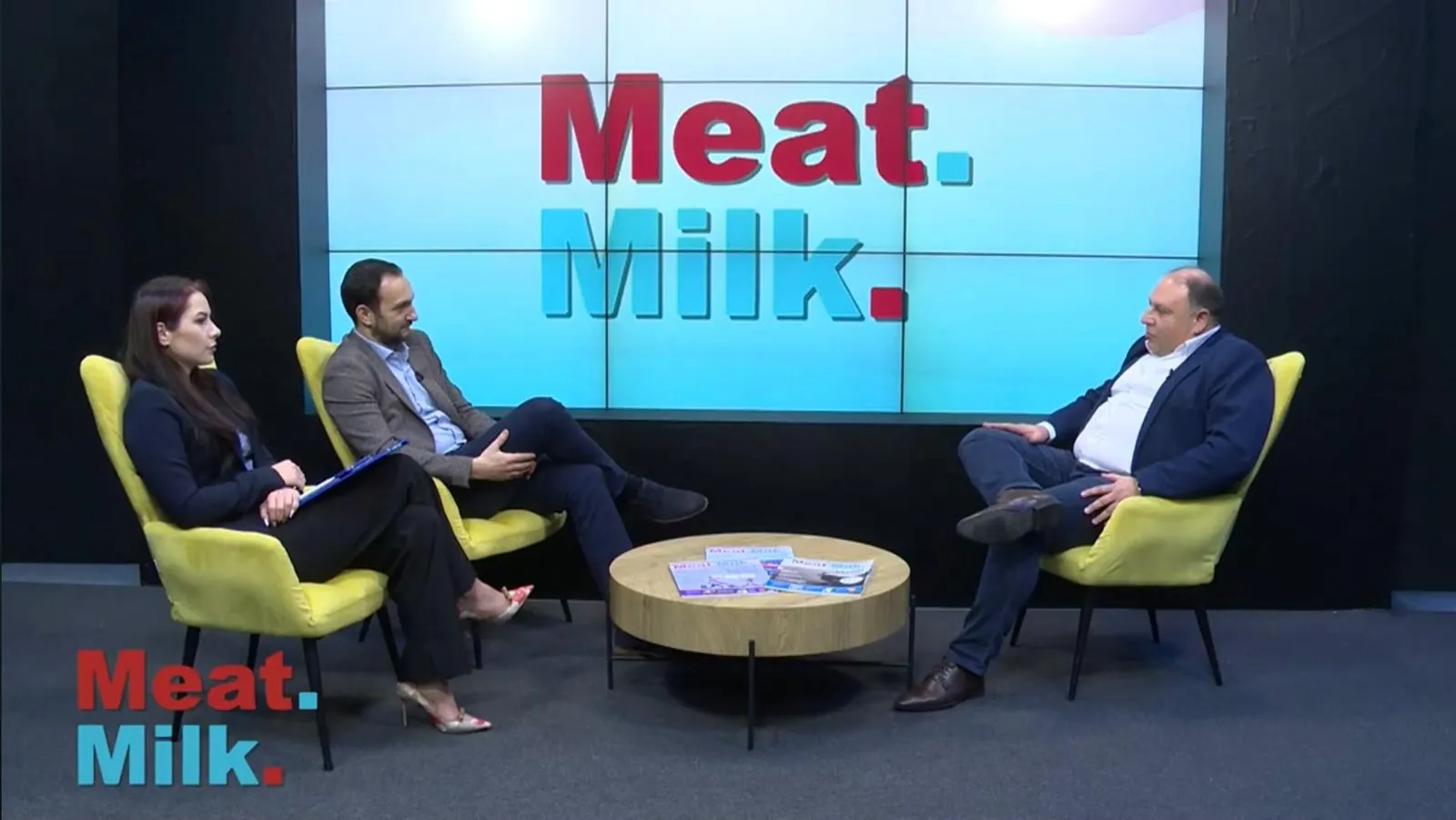
It is evident from recent studies that cheeses made under appropriate sanitary conditions, using good quality raw milk, and matured accordingly, should be devoid of or, at most, have low levels of indicator bacteria. In line with this premise, in a report submitted to the European Commission, Monica Metza, John Sheehana, and Peter C.H. Feng from the University of Dublin, authors of the study "Use of indicator bacteria for monitoring the sanitary quality of raw milk cheeses" (2016), compiled the results of many other studies on the microflora of various artisanal cheeses from Spain (Manchego, Cabrales, La Serena, Majorero, Mahon); Italy (Fiore Sardo, Casu Axedu, Fontina, Toma, Mozzarella, Caciotta); France (Comte, Beaufort, 'Mont d'Or') and Portugal (Serra Da Estrela, Serpa, Sao Jorge) and showed that E. coli was rarely found in any of these cheeses.
Attention to E.coli
The study submitted to the European Commission with the aim of relaxing EU legislation regarding the production of raw milk cheeses also examined the levels of indicator bacteria in other types of cheeses from around the world. Other researchers, such as Martinez Manso and Fernandez Salguero (2018), examined the interior of La Serena cheese after it was matured for 60 days but found no coliforms.
Aygun et al. (2015) analyzed the microbiological quality of Carra, a traditional semi-hard Turkish cheese, from soft to hard, made from raw goat's milk or sometimes raw cow's milk and aged for three months in sealed earthenware jars buried in the ground. Out of the 50 samples analyzed, 82% had an E. coli count of <2 log10 CFU/g.
Brooks et al. (2012) examined 41 raw milk cheeses made from cow, goat, or sheep milk from different regions of the United States and found that 95% (39/41) of the samples had <10 CFU/g of E. coli. The other two samples, one cow's milk cheese and one sheep's milk cheese, contained E. coli at 10 and 30 CFU/g, respectively. O’Brien et al. (2009) tested two cheese samples per month for a year from 15 dairy farms in Ireland.
The analysis of the 351 cheeses, obtained from both raw and pasteurized cow, goat, or sheep milk, showed that 79% of the raw milk cheeses had E. coli at <10 CFU/g.
Rantsiou et al. (2008) tested four Feta cheese samples made by four Greek cheese producers and found that one sample had <100 CFU/g, while the other three samples had <10 CFU/g of coliforms and E. coli. In a review of the microflora and characteristics of various types of Greek cheeses, Litopoulou-Tzanetaki and Tzanetake (2011) found that coliform levels were low or negligible in Kasseri, a semi-hard cheese usually made from raw sheep's milk with 5-10% added goat or cow's milk, and in Melichloro, a hard cheese made from raw sheep's milk, coliforms were found only at levels of 1 log10 CFU/g.
Menéndez et al. (2001) tested 24 samples of Tetilla cheese aged for 2-3 weeks, a Spanish cheese made from raw cow's milk, and found E. coli at average levels of 1.72 log10 CFU/g. Rosengren et al. (2010) examined 151 samples (96 pasteurized milk and 55 raw milk cheeses), fresh or short-ripened cheeses, from 43 farms in Sweden, and found only 3% (3/96) of pasteurized milk cheeses with E. coli compared to 34% (19/55) of raw milk cheeses. Some of these, including a fresh cheese made from pasteurized milk, had E. coli levels of 3-5 log10 CFU/g, and some of the raw milk cheeses had E. coli at >5 log10 CFU/g.
Raw Milk and Its Importance
The study emphasized the importance of using good quality raw milk and hygienic practices to improve control of the cheese production process using raw milk. Most of the studies mentioned above were conducted using conventional microbiological methods. However, others used more sensitive molecular methods to examine the microbial flora of cheeses.
Feurer et al. (2004) used 16S ribosomal DNA sequencing to study the microflora of French red cheeses made from raw or pasteurized milk and did not detect E. coli in any type of cheese. Quigley et al. (2012) used DNA sequencing to examine the microbiota of 62 Irish artisanal cheeses, including soft, semi-hard, or hard cheeses made from raw or pasteurized milk, and did not detect E. coli in any of the samples.
Ercolini et al. (2003) used 16S ribosomal DNA analysis to study the structure and localization of microbial communities in Stilton cheese, but E. coli was not among the microbial flora present in the 16 samples tested.
Randazzo et al. (2006) used 16S ribosomal RNA analyses to examine bacterial diversity in Sicilian Pecorino cheese, but E. coli was not found in any of the five samples tested.
Finally, Martin-Platero et al. (2009) used PCR, 16S ribosomal RNA sequencing, and a molecular subtyping method to examine microbial communities in Quesailla Arochena and Torta Arochena, two Spanish farm cheeses made from raw goat's milk, and found that Hafnia and Serratia were the predominant enterobacterial genera present in some of the cheeses, but E. coli was not found.
Similar results were reported by Alegría et al. (2009), De Pasquale et al. (2014), Duthoit et al. (2005), Duthoit et al. (2003), Randazzo et al. (2010), and Randazzo et al. (2002).
Without finding E. coli using these more sensitive molecular methods, possibly due to the small number of samples examined by some of these studies, others have analyzed a larger number of samples and have not found E. coli, therefore, the results suggest that E. coli is not normally present in cheeses, and if present, it is not at high levels.
Attention to Cleanliness of Working Spaces
In some studies where high levels of indicators were reported in cheeses, most researchers attributed these findings to the poor quality of the raw milk used or contamination during processing, emphasizing the importance of maintaining appropriate sanitary conditions in cheese making and maturation to produce a quality and safe product.
For example, Bricker et al. (2015) examined 10 samples of Mennonite-style Mexican cheese from Chihuahua (eight made from raw milk and two from pasteurized milk). Fecal coliform levels of 2-5 log10 CFU/g, with an average of 3 log10 CFU/g, were found in raw milk cheeses, but none were found in pasteurized milk cheeses, leading the authors to conclude that removing indicator flora from raw milk would improve the quality and safety of cheeses.
Guzman-Hernandez et al. (2016) analyzed 52 fresh, unpasteurized Mexican cheeses for the presence of pathogenic bacteria and indicators. Fresh or queso fresco cheeses are not aged, so they do not benefit from further reduction of indicator levels through aging, therefore, they must be made under sanitary conditions. The study found fecal coliforms and E. coli at levels of >3 log10 CFU/g in 67% and 63% of samples, respectively, concluding that the poor microbiological quality of these products is consistent with unsanitary conditions observed in various production facilities (Guzman-Hernandez et al., 2016).
Eleftheriadou et al. (2002) characterized the microbiological profile of 6500 samples of dairy products in Cyprus, including ice cream and traditional cheeses. The total number of cheese samples tested was not specified, but over 180 cheese samples contained E. coli at >100 CFU/g, a level considered to be of sanitary significance by the authors, and they concluded that it is essential to monitor E. coli in cheeses and improve the production practices of small cheese producers.
Tzanetakis et al. (1987) examined 50 samples of Kopanisti, a soft cheese made from raw cow's milk in Greece, and found no coliforms in 30 samples, but 16 samples had an average of 200 CFU/g, and the other 4 samples had an average of 1500 CFU/g. Papageorgiou et al. (1998) analyzed 62 samples of Pichtogalo Chanion, a soft, spreadable Greek cheese typically made from raw sheep or goat's milk or a blend of both.
All samples contained coliforms, with 30% having levels of 5-5.66 log10 CFU/g. E. coli was also isolated from 88% of samples, with 46.8% having levels >4 log10 CFU/g. The study also showed that high-quality Pichtogalo Chanion can be made with pasteurized milk and is now used for the production of this cheese.
The American Solution
Khayat et al. (1988) tested 256 cheeses, composed of 22 different varieties and purchased from different cities in California, and found that 46% had coliforms at <100 CFU/g, but some samples had coliform counts ranging from 2 to 7 log10 CFU/g.
Since all of these cheeses were labeled as made from pasteurized milk, the authors concluded that sanitation or post-pasteurization contamination events likely occurred. Similarly, Araùjo et al. (2002) examined levels of fecal coliforms in 45 samples from three brands of soft cheeses made from pasteurized milk sold in Rio de Janeiro, Brazil.
The study found that 95% (43/45) of the samples exceeded the Brazilian fecal coliform standard of 100 CFU/g. The levels found ranged from 1 to 6 log10 MPN/g. E. coli was also isolated from 97.7% of samples, including many enteropathogenic strains of E. coli, and therefore, the products were deemed unfit for consumption.
Since these products were made with pasteurized milk, the authors attributed the high numbers of fecal coliforms to improper pasteurization or unsanitary practices during cheese manufacturing. The results of these studies have shown that cheeses made with good quality raw milk and under proper sanitary conditions, and matured appropriately, will either not contain or will have only low levels of indicator bacteria.
In accordance with this premise, between 2014 and 2016, the U.S. Food and Drug Administration analyzed 1606 samples, composed of 5698 sub-samples, of raw milk cheeses aged for a minimum of 60 days and found that 90% of sub-samples had <10 CFU/g of E. coli (US FDA, 2016).
In the cited studies where high levels of indicators were reported in cheeses, most researchers attributed these findings to the poor quality of the raw milk used or contamination during processing and emphasized the importance of maintaining appropriate sanitary conditions in the manufacture and maturation of cheeses to produce a quality and safe product.





